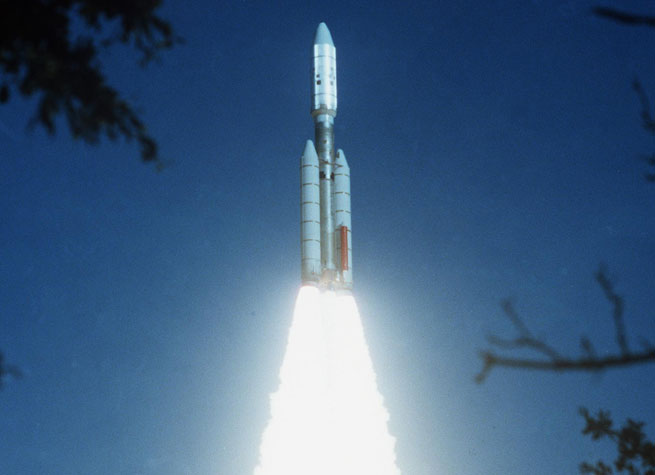
On August 20, 1977, Voyager 2 began what is now the longest-running space mission in Earth’s history.
[aditude-amp id="flyingcarpet" targeting='{"env":"staging","page_type":"article","post_id":514530,"post_type":"story","post_chan":"none","tags":null,"ai":false,"category":"none","all_categories":"business,","session":"A"}']The two Voyager spacecraft are about to enter interstellar space and are still going strong after 35 years spent, well, voyaging. Voyager 1 will celebrate its 35-years-in-space anniversary on September 5.
The mission was the first to show us Earthlings details about Neptune and Uranus, and it also fleshed out our data sets about the many moons of Jupiter and Saturn.
AI Weekly
The must-read newsletter for AI and Big Data industry written by Khari Johnson, Kyle Wiggers, and Seth Colaner.
Included with VentureBeat Insider and VentureBeat VIP memberships.
“Even 35 years on, our rugged Voyager spacecraft are poised to make new discoveries as we eagerly await the signs that we’ve entered interstellar space,” said Voyager scientist Ed Stone in a NASA statement today.
“We can’t wait for Voyager to turn our models of the space beyond our sun into the first observations from interstellar space.”
Interstellar space is what is sounds like — the vast expanses of space between stars and star systems (Interstellar Space is also a Coltrane album, but that’s not in the idiom of this blog). Interstellar space isn’t completely empty; it holds amounts of ionic, atomic, and molecular gases as well as dust and cosmic rays, highly energetic charged subatomic particles emanating from space.
“We continue to listen to Voyager 1 and 2 nearly every day,” said Voyager project manager Suzanne Dodd. “The two spacecraft are in great shape for having flown through Jupiter’s dangerous radioactive environment and having to endure the chill of being so far away from our sun.”
The idea of interstellar space was first posited by Francis Bacon in 1626, and while deep photographic imaging gave us some concrete clues about it, interstellar space remains one of those areas “where no one has gone before.”
Right now, Voyager scientists say that the spacecraft’s readings of cosmic rays from outside our own solar system has seen a marked uptick; at the same time, the occurrence of lower-energy particles from our solar system has declined. Scientists also believe the direction of the magnetic field will change once the Voyager craft are officially in interstellar space.
[aditude-amp id="medium1" targeting='{"env":"staging","page_type":"article","post_id":514530,"post_type":"story","post_chan":"none","tags":null,"ai":false,"category":"none","all_categories":"business,","session":"A"}']
Voyager 1 is 11 billion miles north of the sun, and Voyager 2 is 9 billion miles south of the sun. Here are a few images from the journey so far:
[vb_gallery id=514556]
VentureBeat's mission is to be a digital town square for technical decision-makers to gain knowledge about transformative enterprise technology and transact. Learn More